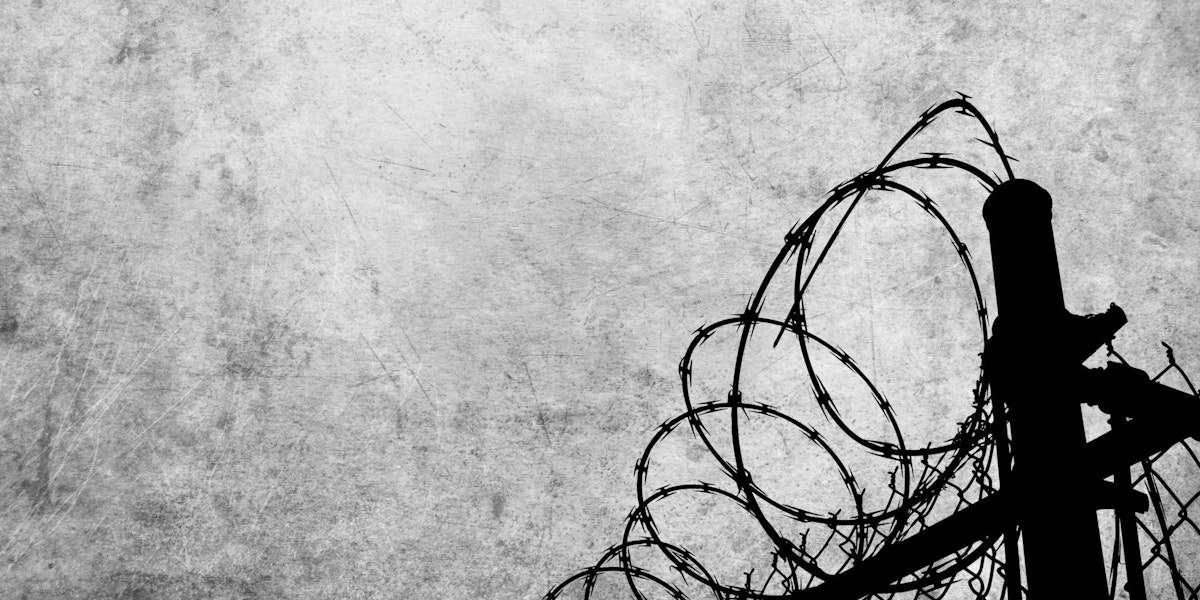Four years ago, I published an article1 in the New York Times Magazine about the business empire of the Mexican drug baron Joaquín “El Chapo” Guzmán. At the time, Guzmán was effectively a ghost: since fleeing a Mexican prison in 2001, he had been operating his narcotics empire while in hiding. There were no current photos of Guzmán—when I interviewed law enforcement officials in the United States and Mexico, they couldn’t say with any confidence what he looked like. It took me months of pouring over court dockets and witness lists for obscure drug cases just to track down a few people who had ever met the man.
What a difference a capture,2 a second prison break,3 and a recapture4 can make. Since Guzmán was re-apprehended by Mexican authorities in January, we have been treated to a dizzying array of what reporters call “access.” Mere hours after Guzmán’s arrest, Rolling Stone published Chapo’s first interview,5 a sensational, if generally un-illuminating, chitchat with the actor Sean Penn. In the months since, a woman purporting to be the drug lord’s daughter has provided an interview6 with convincing details about his life—including the maddening suggestion that even as he was the most wanted criminal in the Americas, Guzmán crossed into the United States, on two occasions, to visit her. Guzmán’s ex-beauty queen wife, Emma Coronel, has also gone public,7 expressing her love for Guzmán, her concern for his wellbeing behind bars, her indignation over the many accusations that have been leveled against him, and her general fogginess on the precise nature of his line of work these many years. The man who for decades thrived because he made such a fetish of secrecy is now launching a PR offensive,8 treating students of the drug war to a banquet of delectably mundane details about his life and his current predicament. The drug lord can no longer count on steady deliveries of Viagra to his prison cell, we are informed,9 but he has plenty of reading material. Lately, he has found solace in Rick Warren’s The Purpose-Driven Life.
Escaping Justice
In an earlier brief in this series,10 I explored the implications of El Chapo’s 2014 capture and 2015 escape for security cooperation between Mexico and the United States. At the time, I confess, I was fairly certain that Guzmán would never be brought back into custody. If his 2014 arrest had signaled a high-point in recent security cooperation between Washington and Mexico, the ensuing debate over whether the drug lord should be extradited to the United States or face trial in Mexico first introduced new strains. Emboldened by their success in ensnaring the world’s most-wanted man, Mexican officials greeted the very suggestion of extradition with breezy disdain. “I can accept extradition, but when I say so,” Mexico’s then-attorney general, Jesus Murillo Karam, said. Before he could face any charges in the United States, El Chapo would have to serve his time in Mexico. Mexico would be happy to turn him over to the United States, Karam joked, in about “four hundred years.”
There was more than reckless machismo underlining these kinds of remarks. Guzmán’s fortunes derive primarily from American largesse. Drug users in the United States sustain his empire—yet the vast majority of the thousands (plausibly even tens of thousands) of people murdered by his underlings and associates over the decades have been from Mexico. This is the peculiar national binary of the drug war, and you can see how Mexico might feel shortchanged: we get all the drugs, they get all the violence. So in the interests of pure justice, it might be right and healthy to try Guzmán in the place where his crimes took the greatest toll.
Drug users in the United States sustain his empire—yet the vast majority of the thousands (plausibly even tens of thousands) of people murdered by his underlings and associates over the decades have been from Mexico. This is the peculiar national binary of the drug war, and you can see how Mexico might feel shortchanged: we get all the drugs, they get all the violence.
But while that might have seemed to be the optimal solution in theory, in practice, any observer who was being honest would have to concede that Mexico’s institutions of criminal justice, even after El Chapo’s capture, were corroded by incompetence and corruption.11 When I spoke with U.S. officials in the aftermath of Chapo’s 2014 capture, they expressed great indignation that Mexico was refusing to turn over the drug lord. Some speculated, darkly, that there was a pernicious explanation for this refusal: by paying what may amount to hundreds of millions of dollars in bribes over the decades, Guzmán had succeeded in so compromising the upper echelons of every branch of government in Mexico that the power structure in Mexico City would never allow him to end up in U.S. custody, where he might find himself in a position to improve his own outlook by deciding to name names. But even those who stopped short of this (plausible) conspiracy theory pointed to the baseline ineffectiveness of Mexico’s criminal justice system.
As it turned out, they were not wrong to worry. During his brief period of confinement, Guzmán enjoyed a range of perks that should have been unthinkable for Mexico’s most notorious outlaw. Authorities in the U.S. knew in advance—and warned Mexico12—that Guzmán’s sons were seeking to engineer an escape. Confronted with the riddle of how, precisely, El Chapo might seek to take leave of Mexico’s most secure penitentiary, a child of twelve might have pointed to the drug lord’s longstanding13 and well-documented14 adoration of the tunnel. The most cursory assessment of Guzmán’s modus operandi could not ignore the complex series of secret tunnels that his engineers devised beneath a network of safe houses in the city of Culiacan. Yet, somehow, he built a tunnel under the prison: a marvel of engineering that connected directly to his ground-floor cell.
Mexican Officials Changing Their Tune
As the details of this spectacle emerged in the weeks after Guzmán’s escape last summer, it did seem that the embarrassment for the government of Mexico was so acute that in the slim chance that he was ever recaptured, the extradition conversation might play out a little differently. And it has: within days of his recapture, Mexican officials were indicating their willingness to turn him over at the earliest point when it was legally possible to do so.15
I spoke with a number of lawyers who have worked on extraditions with Mexico for the U.S. Department of Justice, and they cautioned that it could still take years before Guzmán sets foot on American soil. He has an array of procedural objections available to him, and a dream team of lawyers who are ready to fight. In an almost comical development, Mexican authorities had elected to house Guzmán in Altiplano—the very prison from which he had so recently escaped. (He would be moved from cell to cell, they assured the public, and not sent back to the cell with a tunnel in the shower stall.) So it was not at all outside the realm of possibility that during the years that his legal challenges dragged on, Guzmán might have time to pull off a third escape.
There have been cases, the American lawyers told me, when the government of Mexico chooses to disregard its own constitutional requirements and to deposit certain especially radioactive inmates in the United States in the dead of night. Once the prisoner is in U.S. custody, whatever allegedly unsavory means were used by Mexico’s government to get him there will not amount to legitimate defenses in an American court of law. Depending on their own assessment of the urgency of getting rid of Guzmán and the public relations challenges associated with flouting the law in order to wash their hands of so high-profile a detainee, this may still be an option for officials in Mexico.
It may also explain why the drug lord, who for so long managed to stay in the shadows, is now positively courting publicity. In a final, surreal twist, in recent weeks, Guzmán’s lawyers have announced16 that he finds his conditions in Altiplano so unbearable, this time around, that he might be prepared to waive his legal objections to extradition and turn himself over voluntarily to the United States. It is hard to know exactly what is motivating this surprising change in position. It could be, as his lawyers and his family have argued, that he is being tortured or otherwise abused behind bars, by captors who resent the humiliation he visited upon them with his last escape. It could also be that he fears he may be murdered in Altiplano: if there are powerful people in or out of government in Mexico who would prefer that he not end up talking to prosecutors in the United States, the surest course for eliminating that risk would be to have Guzmán killed in prison. It could also be that Guzmán is simply tired: he is around sixty now, and after a lifetime full of risk and uncertainty, he may be resigning himself to a banal but predictable retirement in Marion, Illinois.17
El Chapo might be willing to turn himself over and waive extradition—but not without conditions.
Or maybe not Marion. Guzmán always loved the deal, and even at the height of his powers, when he was running a multi-billion dollar narcotics empire, he would take the time to personally negotiate the price-per-kilo of a single shipment of heroin. El Chapo might be willing to turn himself over and waive extradition—but not without conditions. Guzmán would be prepared to make a deal, his lawyer indicated, provided that he could be guaranteed in advance that he would serve his time not in a SuperMax, but in a medium-security facility. Something with outdoor space, perhaps. And a view. The drug lord understood that he would have to serve some time in the United States. Not life, of course, but he’s ready to serve “a reasonable sentence.”
Notes
- Patrick Radden Keefe, “Cocaine Incorporated,” The New York Times Magazine, June 15, 2012, http://www.nytimes.com/2012/06/17/magazine/how-a-mexican-drug-cartel-makes-its-billions.html.
- Patrick Radden Keefe, “The Hunt For El Chapo,” The New Yorker, May 5, 2014, http://www.newyorker.com/magazine/2014/05/05/the-hunt-for-el-chapo.
- Patrick Radden Keefe, “El Chapo Escapes Again,” The New Yorker, July 12, 2015, http://www.newyorker.com/news/news-desk/el-chapo-escapes-again.
- Patrick Radden Keefe, “The Tragic Farce of El Chapo,” The New Yorker, January 11, 2016, http://www.newyorker.com/news/news-desk/the-tragic-farce-of-el-chapo.
- Sean Penn, “El Chapo Speaks,” Rolling Stone, January 9, 2016, http://www.rollingstone.com/culture/features/el-chapo-speaks-20160109.
- José Luis Montenegro, “Californian, Businesswoman, ‘Narco Junior’: El Chapo’s American Daughter,” The Guardian, March 4, 2016, http://www.theguardian.com/world/2016/mar/04/el-chapo-daughter-joaquin-guzman-california.
- “La Esposa de ‘El Chapo,’ Emma Coronel, Habla con Telemundo 2/5,” Telemundo, https://www.telemundo.com/noticias/2016/02/21/la-esposa-de-el-chapo-emma-coronel-habla-con-telemundo-25.
- “‘El Chapo’ Guzmán’s Team Launching a PR Campaign,” Fox News Latino, March 5, 2016, http://latino.foxnews.com/latino/news/2016/03/05/el-chapo-guzman-team-launching-pr-campaign/.
- “El Chapo ‘Has Plenty to Read but No Viagra’ in Mexican Prison Regime,” The Guardian, March 19, 2016, http://www.theguardian.com/world/2016/mar/19/el-chapo-has-plenty-to-read-but-no-viagra-in-mexican-prison-regime.
- Patrick Radden Keefe, “The Chapo Conundrum,” The Century Foundation, October 27, 2015, https://tcf.org/content/report/the-chapo-conundrum/.
- Patrick Radden Keefe, “Mexico’s New Drug War: Catch and Release?” The New Yorker, September 9, 2013, http://www.newyorker.com/news/daily-comment/mexicos-new-drug-war-catch-and-release.
- “DEA Knew ‘El Chapo’ Had Escape Plans, Warned Mexico,” CBS News, July 13, 2015, http://www.cbsnews.com/news/dea-knew-joaquin-el-chapo-guzman-had-escape-plans-told-mexico/.
- Patrick Radden Keefe, “Cocaine Incorporated,” The New York Times Magazine, June 15, 2012, http://www.nytimes.com/2012/06/17/magazine/how-a-mexican-drug-cartel-makes-its-billions.html.
- Monte Reel, “Underworld,” The New Yorker, August 3, 2015, http://www.newyorker.com/magazine/2015/08/03/underworld-monte-reel.
- Azam Ahmed, “Mexico Moves to Extradite Drug Kingpin Called el Chapo to the U.S.,” The New York Times, January 9, 2016, http://www.nytimes.com/2016/01/10/world/americas/el-chapo-mexico-extradition-united-states.html.
- Joshua Berlinger, “Lawyer: El Chapo Will Accept Extradition If He Goes to a Medium Security Prison,” CNN, February 27, 2016, http://www.cnn.com/2016/02/27/americas/el-chapo-us-extradition-conditions/.
- “United States Penitentiary, Marion,” Wikipedia, last modified February 28, 2016, https://en.wikipedia.org/wiki/United_States_Penitentiary,_Marion.










